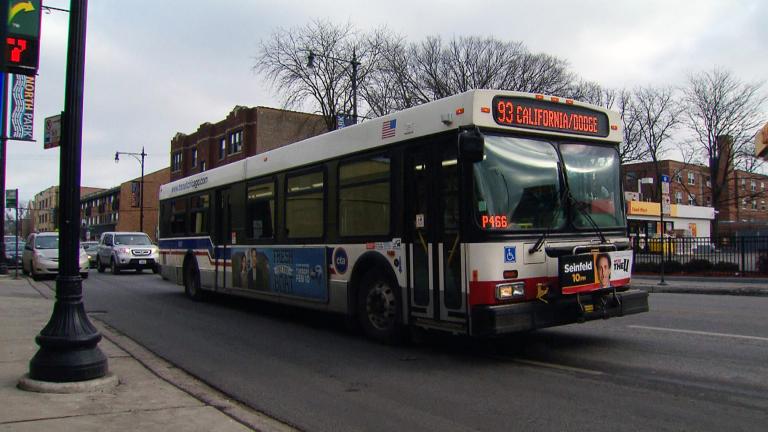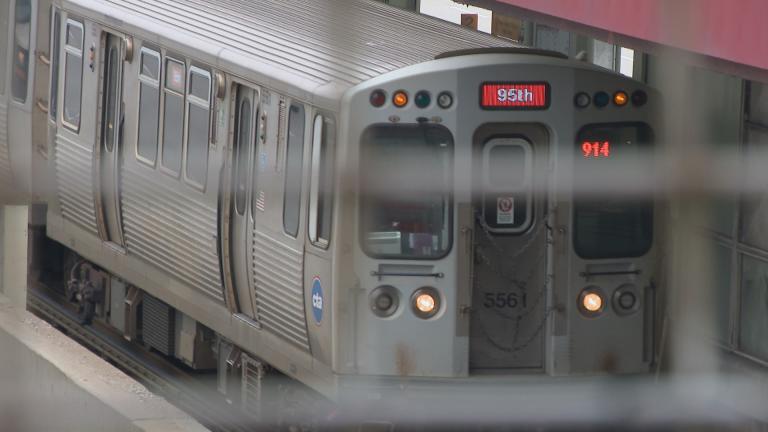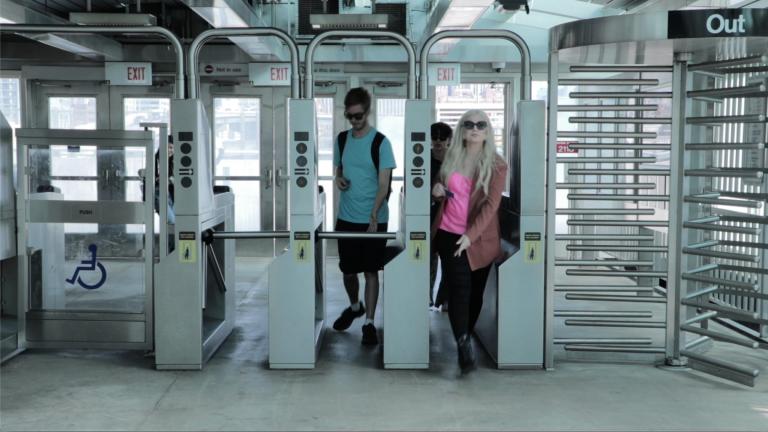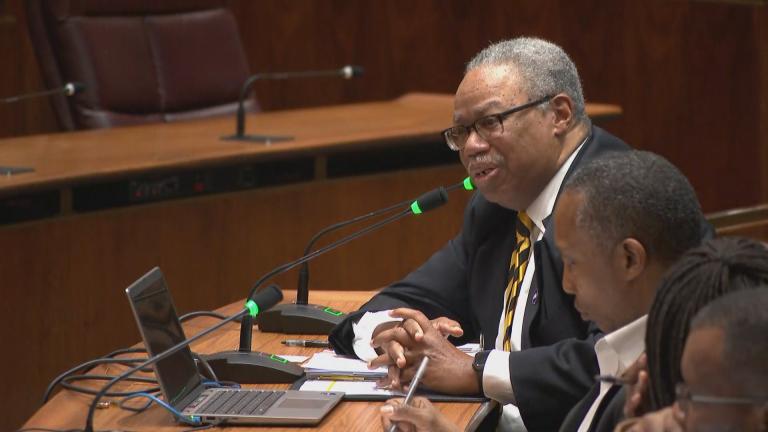Since she moved to Logan Square in 1997, resident Khloe Karova has seen many businesses and many neighbors come and go. Standing on the lawn of the Logan Square monument in the heart of the neighborhood, Karova gestures to the site of a new Target store on Milwaukee Avenue.
“Just 100 feet behind me is Logan Crossing, which displaced the Megamall,” Karova explains. “So, before, there was a very, very large shopping structure which is so dear to many hundreds of community residents called the Megamall. And so when you walk down Milwaukee Avenue, you see that new structure (which) for some people, like one resident we interviewed was like, ‘wow, that’s progress.’ But then there are lots of other residents (who) were like, ‘every time I walk down Milwaukee past that building, I feel a sense of mourning. I am losing something.’ So one of the things that we want people to be sensitive to when they’re walking down Milwaukee is, yes, there’s development, development does come at a cost. And we should have a conversation about that.”
To document that conversation, Karova published “The Logan Square Book — Gentrification and Preservation in a Chicago Neighborhood.” It captures what was for decades a predominantly Latino neighborhood as it has become a wealthier – and whiter – enclave.
“One of the things that I was hoping to achieve with this book is to stoke a dialogue about preservation and gentrification,” Karova said. “What is the right mix of development and also preserving some of these businesses and historic structures? What are those nonprofits and cultural institutions that we want to make sure continue on?”
Among the chapters featuring the people and places of Logan Square is a focus on its many independent businesses.
“It was the Latinx businesses throughout the 1970s and 1980s that not only preserved a lot of the historic structures that we appreciate today, but also they laid the business foundation for all of these restaurants and cafes and new lifestyle retailers to be successful along Milwaukee Avenue.”
The creative team behind the book, which includes text in Spanish and English, included four photographers and three writers.
“Inez Bollina was the main writer. And one of the things that was really important to me is I wanted to be able to capture stories from residents either in English or Spanish, whichever language they felt most comfortable with. And you know, I decided I’m going to trust the neighborhood to tell their story authentically.”
Now through June 27, the Logan Square Blue Line station platform is a subterranean gallery featuring a selection of photographs from the book.
“The concept is, I was thinking, what if we have the CTA Logan Square Blue Line station be about the people and places of Logan Square?” Karova said. “There’s 44 panels of photographs of nonprofits, vernacular architecture, mom and pop shops, street art. I wanted to transform the station, which is normally just like (you) hang out there and you wait for the next train — and now it’s a place of learning. It’s a place of important histories in the neighborhood and it’s also a place of contemplation just like you would find at the Art Institute or any of the galleries downtown.”








